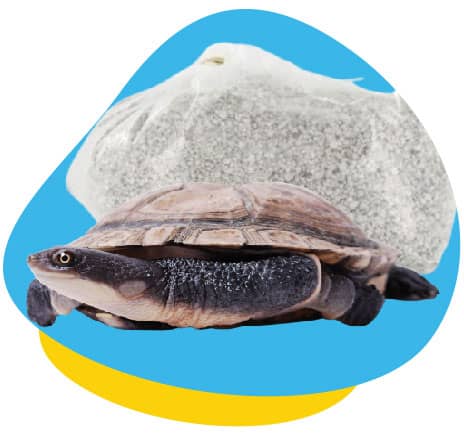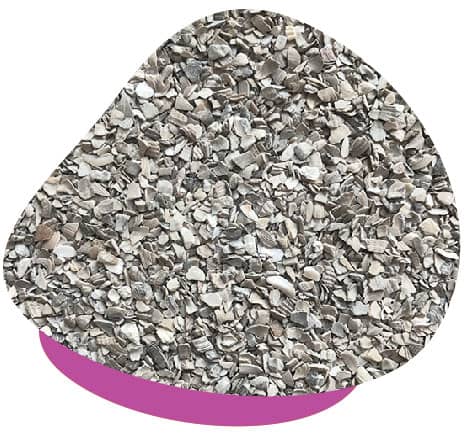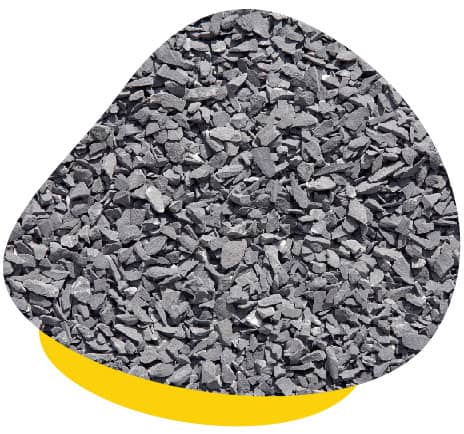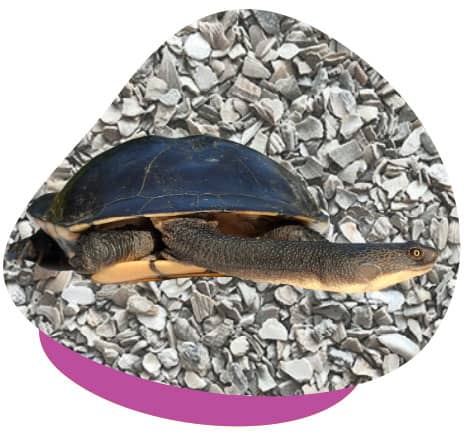What is “Turtle Grit”?
Turtle grit is one of the most commonly recommended substrates for aquariums that house freshwater turtle species.
While there are various turtle grit brands on the market, they are all-natural mineral grits created by crushing limestone rock into pieces ranging from 2mm to 3.2mm. These grits range in colour from dark grey through to white and are composed predominantly of calcium carbonate. Other alternatives include crushed coral (though this can have sharp edges) and shell grit that is often sold for birds.

Why is “Turtle Grit” Recommended?
To understand why a substrate composed of calcium carbonate is recommended for turtles, it is important to understand something about water chemistry.
pH is a measure of the acidity or alkalinity of the water. The pH scale ranges from 1 to 14. On this scale 7 is “neutral” (i.e., neither acidic nor alkaline). The lower the number the more acidic the water; the higher the number the more alkaline the water becomes.
Something that is especially important to know is that the pH scale is not linear. This means that a pH of 5 is not just 1 point more acidic than a pH of 6. The pH scale is in fact, logarithmic. This means that a pH of 5 is actually 10 times more acidic than a pH of 6. A pH of 4 is 100 times more acidic than a pH of 6, and so on. Therefore, it is easy to appreciate that even small changes in the pH of a tank’s water can result in water being hugely more acidic or alkaline.
With this knowledge, it is also easy to understand that we really want to avoid rapid and significant changes in water pH because it has the very real potential of causing serious health problems to turtles swimming around in it. The wrong pH can result in skin, eye and shell issues.
The turtle’s aquarium will, over time, become more and more acidic if they are not maintained. This is because bacteria in the tank are constantly breaking down waste products (e.g., turtle faeces, uneaten food etc.) via a process called the Nitrogen Cycle forming products called nitrite and nitrate. Both of these are acidic, and if their levels increase in the water, the pH will drop.
So how do we stop this happening? We need to make sure our water has adequate carbonate hardness or KH as it is known for short. KH is a measure of how much carbonate and bicarbonate is dissolved in the water. Why is this important? KH is an invisible barrier in the water that buffers against the acid production. As acids are produced KH neutralises it and prevents decreases in the pH. But this comes at a cost because the KH is used up as it protects against the acid.
Remember the KH was a measure of how much carbonate and bicarbonate was dissolved in the water? Also, remember that turtle grit was composed almost entirely calcium carbonate? Well, as the turtle grit in the tank slowly dissolves over time, it releases the carbonate into the water resulting in a stable KH level, which helps keep the pH of the water stable and prevent it from becoming too acidic.


How Much “turtle Grit” Do I Need?
As a rule, turtle grit should be at least 3cm thick over the entire floor of the tank.
Do I Need to Replace “Turtle Grit”?
Turtle grit does not need to be replaced. Simply top it up as it dissolves.
Do I Need to Wash “Turtle Grit” Before Using It?
It is unnecessary to wash the grit before use; however, some dust forms in the bag with the settling of the product. This can be washed away and will reduce some of the normal cloudiness that occurs to the water when the product is added to the tank.


